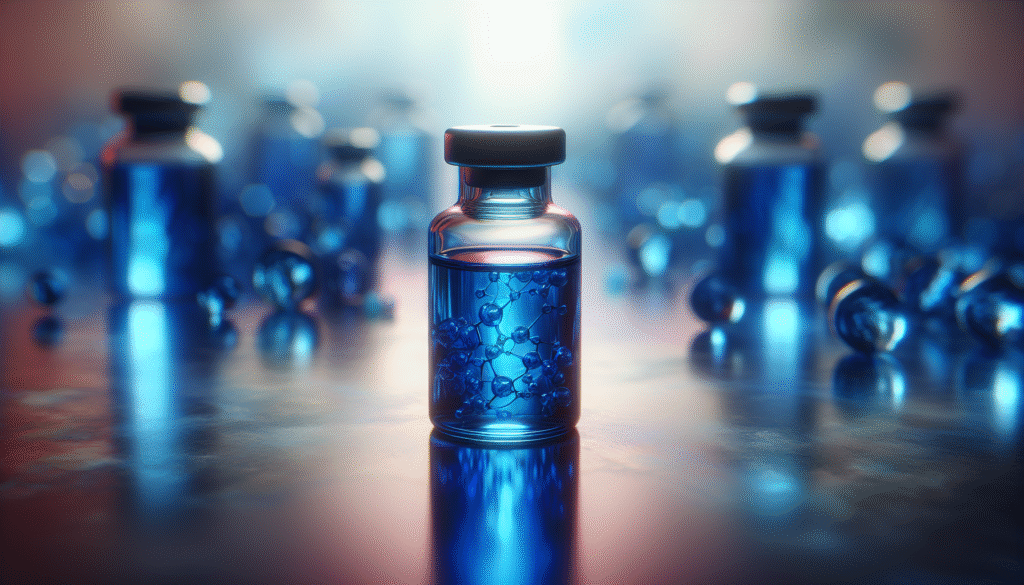
Have you ever considered how the substances we encounter in our daily lives might influence our mental well-being? As science continues to advance, the exploration of various compounds and their impact on health has gained traction. One such compound garnering attention is Methylene Blue—a dye with a rich history and emerging relevance in mental health research.
An Overview of Methylene Blue
Methylene Blue is a synthetic compound originally developed as a dye in the late 19th century. Initially used in textiles, its potential applications have expanded significantly across various fields, including medicine and neuroscience.
Historical Context
Its early history is notable; Methylene Blue was utilized to treat malaria, and it has also been used as a surgical stain. Over the years, researchers have begun to investigate its pharmacological properties. Today, scientists are looking into its potential therapeutic applications, particularly in relation to mental health disorders.
Chemical Properties and Mechanism of Action
Understanding how Methylene Blue operates at a molecular level is crucial for grasping its implications in mental health.
-
Chemical Structure: Methylene Blue belongs to a class of compounds known as phenothiazines. Its chemical structure possesses unique properties that allow it to interact with various biological processes.
-
Mechanism of Action: Methylene Blue functions primarily as an electron donor. It assists in cellular respiration by facilitating the transfer of electrons in mitochondria, which may enhance energy production. This function is vital, as mitochondrial dysfunction is often linked to several mental health disorders.
Mental Health: The Role of Neurotransmitters
At the core of mental health are neurotransmitters—chemicals that relay signals in the brain. An imbalance or dysfunction in these neurotransmitters can lead to various psychological conditions, such as depression and anxiety.
Key Neurotransmitters
-
Serotonin: Often referred to as the “feel-good” neurotransmitter, serotonin plays a significant role in mood regulation.
-
Dopamine: This neurotransmitter is essential for motivation, pleasure, and reward. Disruptions in dopamine levels can contribute to disorders like depression and schizophrenia.
-
Norepinephrine: Primarily associated with the body’s stress response, norepinephrine influences alertness and arousal.
Methylene Blue and Neurotransmitter Regulation
Research suggests that Methylene Blue may positively affect the neurotransmitter systems mentioned above. It has been shown to:
-
Enhance Serotonin Levels: By inhibiting the enzyme monoamine oxidase, Methylene Blue may prolong the action of serotonin in the brain.
-
Support Dopaminergic Function: Preliminary studies indicate that Methylene Blue may support dopamine levels and enhance signaling, providing insights into its potential efficacy for conditions like Parkinson’s disease.
-
Modulate Norepinephrine: The compound has also been suggested to influence the norepinephrine system, which can improve focus and attention.

Potential Applications of Methylene Blue in Mental Health
Given its properties and effects on neurotransmitters, Methylene Blue is being researched for several mental health applications.
Depression
Methylene Blue has garnered attention for its potential in treating major depressive disorder (MDD).
-
Clinical Studies: Some studies indicate that Methylene Blue may provide antidepressant effects, particularly in treatment-resistant depression. Its ability to enhance mitochondrial function and neurotransmitter activity makes it a candidate for further exploration in this area.
-
Safety and Efficacy: While initial results are promising, ongoing research is necessary to establish the safety and efficacy of Methylene Blue as a standard treatment option for depression.
Anxiety Disorders
Anxiety disorders, including generalized anxiety disorder (GAD) and panic disorder, affect millions of individuals worldwide.
-
Oxidative Stress and Methylene Blue: Anxiety has been correlated with increased oxidative stress in the brain. Research suggests that Methylene Blue’s antioxidant properties may counteract this oxidative stress, potentially providing relief from anxiety symptoms.
-
Behavioral Studies: Animal studies have also indicated a reduction in anxiety-like behaviors with Methylene Blue administration. These results warrant further investigations into its applicability in human subjects.
Neurodegenerative Conditions
Methylene Blue’s influence extends beyond standard mental health conditions; it also shows promise in neurodegenerative diseases.
-
Alzheimer’s Disease: Research has indicated that Methylene Blue may inhibit tau protein fibrillization, a hallmark of Alzheimer’s disease, and protect neural pathways.
-
Parkinson’s Disease: As mentioned, the compound’s effect on dopamine regulation suggests potential therapeutic benefits for individuals with Parkinson’s, a condition characterized by the degeneration of dopaminergic neurons.
Safety Profile and Dosage Considerations
While Methylene Blue presents exciting possibilities, understanding its safety profile and dosage considerations is essential.
Side Effects
Methylene Blue is generally considered safe when used appropriately. Potential side effects may include:
-
Gastrointestinal Disturbances: Some individuals may experience nausea or upset stomach.
-
Allergic Reactions: Like any medication, allergic reactions are possible, though rare.
-
Interactions with Other Medications: Methylene Blue can interact with certain medications, including SSRIs and other antidepressants, leading to serious conditions such as serotonin syndrome.
Recommended Dosage
Research has yet to establish a universally accepted dosage for Methylene Blue in the context of mental health. However, doses ranging from 0.5 mg to 5 mg per kilogram of body weight have been explored in research settings. Consulting with a healthcare provider is crucial when considering Methylene Blue as a treatment option.

Current Research and Future Directions
The exploration of Methylene Blue’s role in mental health is ongoing.
Promising Studies
Several clinical trials aim to understand the full extent of Methylene Blue’s benefits:
-
Pilot Studies: Small-scale studies have shown positive effects on mood disorders, warranting larger, more comprehensive trials.
-
Longitudinal Studies: Extended research over longer periods will help assess the long-term implications of Methylene Blue use.
Challenges and Considerations
While there is significant potential, challenges remain in the research landscape. These challenges include:
-
Individual Variability: Responses to Methylene Blue can vary significantly among individuals, influenced by genetic, environmental, and health factors.
-
Regulatory Hurdles: Gaining approval for new treatment options can be a lengthy process, often requiring extensive data collection and regulatory scrutiny.
Conclusion: A New Frontier in Mental Health Treatment
The connection between Methylene Blue and mental health is becoming increasingly clear. As a compound with a storied history, its potential to influence neurotransmitter function, combat oxidative stress, and possibly alleviate symptoms of mental health disorders cannot be overlooked. Continued research is vital to unlocking Methylene Blue’s full therapeutic potential.
In the evolving landscape of mental health treatments, Methylene Blue represents a promising area of exploration. As we deepen our understanding of its mechanisms and effects, one thing is certain: the quest for innovative and effective mental health solutions continues, and compounds like Methylene Blue may play a pivotal role in shaping the future of mental health care.